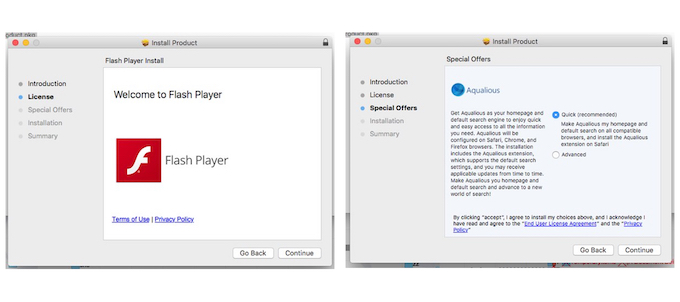Amidst confirmed reports that malicious hackers are starting to use fake Flash Player downloads as social engineering lures for malware, Adobe has issued a call-to-arms for users to validate installers before downloading software updates.
The company's notice comes on the heels of malware attacks on Facebook, MySpace and Twitter that attempt to trick Windows users into installing a Flash Player update that turns out to be a malicious executable.
Some golden advice from Adobe's advisory:
First off, do not download Flash Player from a site other than adobe.com -- you can find the link for downloading Flash Player here. This goes for any piece of software (Reader, Windows Media Player, QuickTime, etc.) – if you get a notice to update, it's not a bad idea to go directly to the site of the software vendor and download the update directly from the source. If the download is from an unfamiliar URL or an IP address, you should be suspicious.
An Adobe Flash Player fake update is being used by some hackers to infect some Mac devices with scareware. Adobe has released several updates for its Flash Player in the past few weeks. There are hackers, however, who are using a fake update to infect some computers with scareware by implementing an. Fake Adobe Flash Player install spreads malicious programs Fake Adobe Flash Player install or update pop-up might show up on the screen out of nowhere. While Flash Player is a legit application, cybercriminals often take advantage of it to spread malicious programs.
Second, all Adobe software for Windows is signed with a digital certificate that is validated by Windows when you install our software. The Publisher will always be 'Adobe Systems, Incorporated', and you can verify this when you double-click the installer, or by right-clicking on the installer, selecting 'Properties', and going to the 'Digital Signatures' tab.
For Flash Player in particular, computer users can use this page to verify what version of Flash Player is installed, and what the current version of Flash Player is for your operating system. The most recent version of Flash Player version is 9.0.124.0.
Adobe Flash is arguably the most widely deployed software in the world.
Related Topics:
CXO Microsoft Enterprise Software Windows 10 PCs Reviews
An Adobe Flash Player fake update is being used by some hackers to infect some Mac devices with scareware.
Adobe has released several updates for its Flash Player in the past few weeks. There are hackers, however, who are using a fake update to infect some computers with scareware by implementing an old trick, according to TNH Online.
The new scam was first discovered by researchers from the SANS Technology Institute. They explained that the Adobe Flash Player fake update is being distributed through malicious advertising, Softpedia reports.
Users will first see a warning message informing them that their Flash Player needs to be updated to continue loading the page they are on. Once they press the 'OK' button, they will be led to an unfamiliar website, the report details.
While the trick has been used for several years already, there are still a lot of users who are not familiar with it. Some will still fall for the scam and will get their Mac devices infected with scareware, the report details.
The scareware installer tricks the OS X into thinking that it is a trusted app, or that the program comes from the official App Store because it has an Apple developer certificate. This way, the malware will be able to go through the defense of the OS X and execute its code, the report explains.
Apple Flash Player For Mac
Once the computer is infected with the scareware, the victim will be led to an option to continue installing the real Flash. However, potential unwanted apps will also be installed on the computer. These apps will redirect the victim to a webpage where they will be forced to install malicious browser extensions.
Adobe Flash Player For Mac Air
Users are advised to not immediately fall for popup warnings, such as the Adobe Flash Player fake update, which tells them that they have security issues on their device. All the more if an application tells them that they need to install an update to fix the issue.